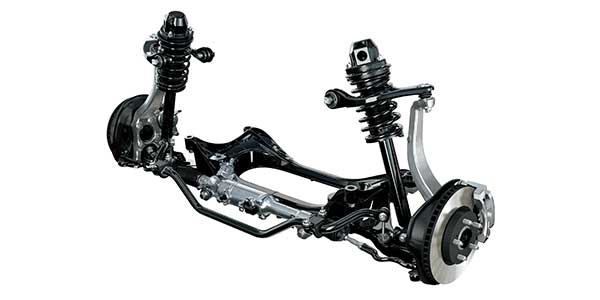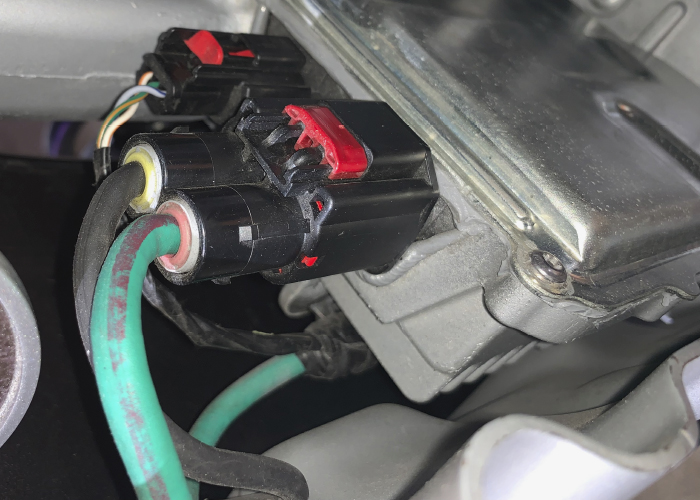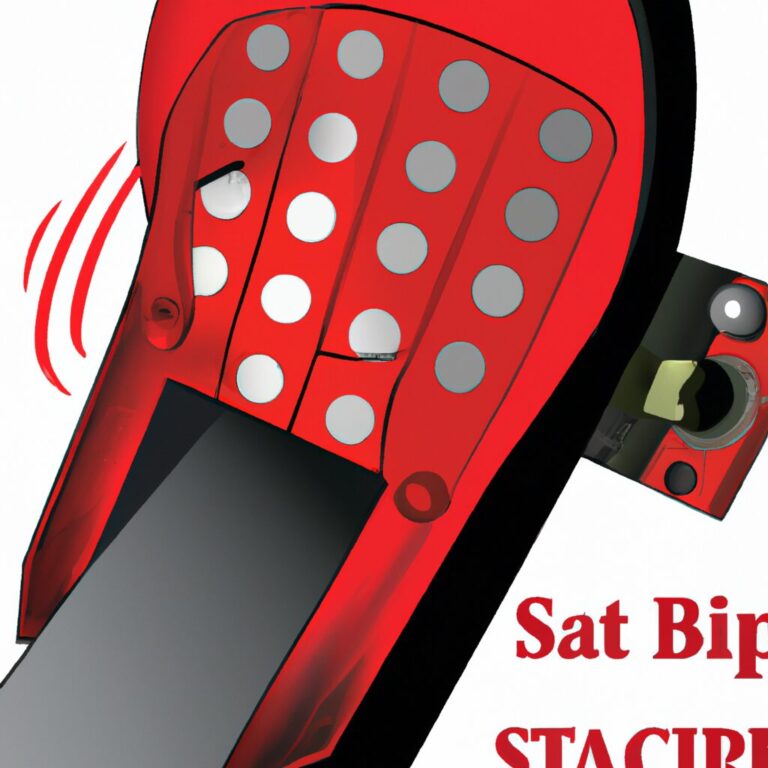How to Check Electric Power Steering
To check electric power steering, start the car and listen for any unusual noise or vibration while turning the steering wheel. Look for warning lights on the dashboard and inspect the power steering fluid level.
Electric power steering is a crucial component in modern vehicles that provides drivers with smooth and responsive steering. If you suspect any issues with your power steering system, it is important to perform regular checks to ensure its proper functionality.
By following a few simple steps, you can easily monitor the health of your electric power steering and address any potential problems before they escalate. We will discuss the importance of checking your electric power steering system and provide a step-by-step guide on how to do so effectively.
Understanding Electric Power Steering
Electric power steering (EPS) has become a popular choice in modern vehicles as it offers a more efficient and convenient way to steer compared to traditional hydraulic power steering. Understanding how electric power steering works and its advantages can help you maintain and check the system effectively. In this article, we will discuss the key aspects of electric power steering, including how it works and the advantages it offers.
How Electric Power Steering Works
Electric power steering operates using an electric motor connected to the steering column or rack. Instead of relying on hydraulic fluid and a pump like hydraulic power steering, EPS utilizes an electrical motor to assist with steering efforts. When you turn the steering wheel, sensors detect the movement and send signals to the control module. The control module then instructs the electric motor to provide additional or reduced assistance, based on the driving conditions and input.
The electric motor’s assistance reduces the amount of effort required to steer the vehicle, making it easier to maneuver in various driving situations. The level of assistance can vary, depending on factors such as vehicle speed and the driver’s input. This adaptiveness ensures that the steering feels light and responsive at low speeds, while providing stability and control at high speeds.
Advantages Of Electric Power Steering
Electric power steering offers several advantages over traditional hydraulic power steering systems. These advantages include:
- Improved Fuel Efficiency: EPS does not rely on an engine-driven hydraulic pump, resulting in reduced parasitic losses. This improves fuel efficiency and reduces emissions, making it more environmentally friendly.
- Enhanced Control and Stability: The electric motor’s adaptiveness allows for precise control and stability, especially during high-speed driving or sudden maneuvers. This improves overall vehicle safety.
- Reduced Maintenance: Unlike hydraulic power steering systems, EPS does not require regular fluid checks and changes. This simplifies maintenance and reduces costs in the long run.
- Increased Flexibility in Design: EPS systems offer flexibility in design and placement, allowing vehicle manufacturers to optimize cabin space and improve overall vehicle architecture.
- Intelligent Steering Assistance: Electric power steering systems can incorporate advanced features, such as lane-keeping assist and automated parking, which enhance driver assistance and safety.
By understanding how electric power steering works and its advantages, you can appreciate the technology’s benefits and effectively check its performance. Regular maintenance and proper checks are essential to ensure your electric power steering system functions optimally and provides a smooth and safe driving experience.

Credit: www.tomorrowstechnician.com
Signs Of Electric Power Steering Problems
Unusual Steering Wheel Behavior
1. Jerking or pulling of the steering wheel.
2. Steering feels heavier or lighter than usual.
Dashboard Warning Lights
1. Illumination of EPS (Electric Power Steering) light.
2. Check engine light is on along with steering issues.
Steps To Check Electric Power Steering
Steps to Check Electric Power Steering:
Visual Inspection
Inspect the power steering components for visible damage or leaks.
Checking The Power Steering Fluid Level
Open the hood and locate the power steering fluid reservoir. Remove the cap and check the level against the indicator.
Testing The Steering Assist
Start the vehicle and turn the steering wheel in each direction to test the power steering assist response.

Credit: www.tomorrowstechnician.com
Common Electric Power Steering Issues
Electric power steering (EPS) is a crucial component in modern vehicles that enhances driver control and reduces the effort required to turn the steering wheel. However, like any other mechanical system, EPS can experience issues that affect its functionality and performance. In this section, we will explore two common electric power steering issues: faulty electric motor and issues with sensors.
Faulty Electric Motor
A faulty electric motor is one of the primary issues that can affect electric power steering. The electric motor is responsible for providing the necessary assistance to the driver when turning the steering wheel. When the motor malfunctions, it can result in various steering problems.
Some indications of a faulty electric motor include:
- Intermittent or complete loss of power steering assist
- Strange noises coming from the motor
- Inconsistent steering effort required
If you encounter any of these symptoms, it is crucial to have the electric motor checked by a qualified technician. They can diagnose the problem and determine if a repair or replacement is necessary.
Issues With Sensors
The sensors in the electric power steering system play a vital role in providing accurate information about the vehicle’s speed, steering angle, and driver input. Issues with these sensors can lead to erroneous readings, resulting in improper steering assistance or complete failure.
Here are some signs that indicate possible issues with the sensors:
- Steering feels heavy or unresponsive
- Inconsistent steering assistance at different speeds
- Unexpected steering wheel vibrations
If you notice these symptoms, it is essential to have the sensors inspected and calibrated by a professional mechanic. They will be able to identify any faulty sensors and take the necessary steps to address the problem.
In conclusion, being aware of common electric power steering issues such as a faulty electric motor and issues with sensors can help you detect and resolve problems promptly. If you experience any unusual steering behavior or notice the mentioned signs, don’t hesitate to consult a qualified technician to ensure the safety and performance of your vehicle.
Maintenance And Servicing
Just like any other system in your vehicle, the electric power steering (EPS) requires regular inspection, maintenance, and professional servicing to ensure smooth and efficient operation. By adhering to a routine maintenance schedule and addressing issues promptly, you can prolong the lifespan of your EPS system and prevent potential problems down the road.
Regular Inspection And Maintenance
Regular inspection and maintenance play a crucial role in keeping your electric power steering system in optimal condition. Here are a few key maintenance tasks to consider:
- Check Power Steering Fluid Level: Ensure the power steering fluid is at the correct level as indicated in the vehicle’s manual. Low fluid levels can lead to system malfunctions.
- Inspect for Leaks: Regularly check for any signs of power steering fluid leaks around the system components, such as the hoses, pump, or steering rack. Address leaks promptly to prevent damage.
- Monitor Belt and Tension: Ensure the power steering belt is in good condition and properly tensioned. A worn or loose belt can affect the system’s performance.
- Listen for Unusual Sounds: Pay attention to any unusual noises when turning the steering wheel, as this could indicate underlying issues with the EPS system.
Professional Servicing
While performing regular inspections and maintenance tasks can help keep your electric power steering system in good shape, professional servicing by a qualified technician is essential for more in-depth assessments and repairs. When seeking professional servicing, consider the following:
- Diagnostic Testing: A professional technician can conduct diagnostic testing to identify any underlying issues with the EPS system and address them effectively.
- Component Replacement: If any EPS components show signs of wear or damage, a professional can carry out necessary replacements to maintain the system’s functionality.
- System Calibration: Proper calibration of the electric power steering system is vital to ensure optimal performance and responsiveness, which can be performed by a qualified technician.

Credit: m.youtube.com
Frequently Asked Questions On How To Check Electric Power Steering
How Do You Know When Electric Power Steering Is Bad?
You can tell electric power steering is bad when you experience difficulty steering, hear unusual noises, or notice erratic steering behavior. If the warning light illuminates on your dashboard, it’s also a sign of potential issues. Regular maintenance and timely inspections can help prevent problems with electric power steering.
How Do You Reset The Electric Power Steering System?
To reset the electric power steering system, follow these steps: 1. Turn off your vehicle’s ignition. 2. Disconnect the battery cables for about 15 minutes. 3. Reconnect the battery cables and start the vehicle. 4. Turn the steering wheel from left to right multiple times.
5. Drive the car and check if the power steering is functioning properly.
What Happens When Your Electric Steering Goes Out?
When your electric steering goes out, you will experience difficulty steering your vehicle. This can be dangerous and requires immediate attention from a professional mechanic.
Is Electric Power Steering Expensive To Fix?
Repairing electric power steering can be expensive due to the complex components involved. Costs vary based on the issue.
How Does Electric Power Steering Work?
Electric power steering (EPS) uses an electric motor to assist the driver in turning the steering wheel.
Why Should I Check My Electric Power Steering?
Regular checks ensure proper functioning, preventing potential hazards and costly repairs.
What Are The Signs Of Electric Power Steering Issues?
Unusual noises, stiff steering, and warning lights indicate potential EPS problems.
Conclusion
To conclude, checking your electric power steering is an essential step in ensuring its proper functioning and performance. By following the simple steps outlined you can easily diagnose any potential issues and take appropriate action to address them. Regular maintenance and a keen eye will go a long way in maintaining the longevity and efficiency of your electric power steering system.
So, don’t overlook this important aspect of your vehicle’s functionality and enjoy a smooth and hassle-free driving experience.


